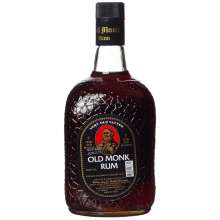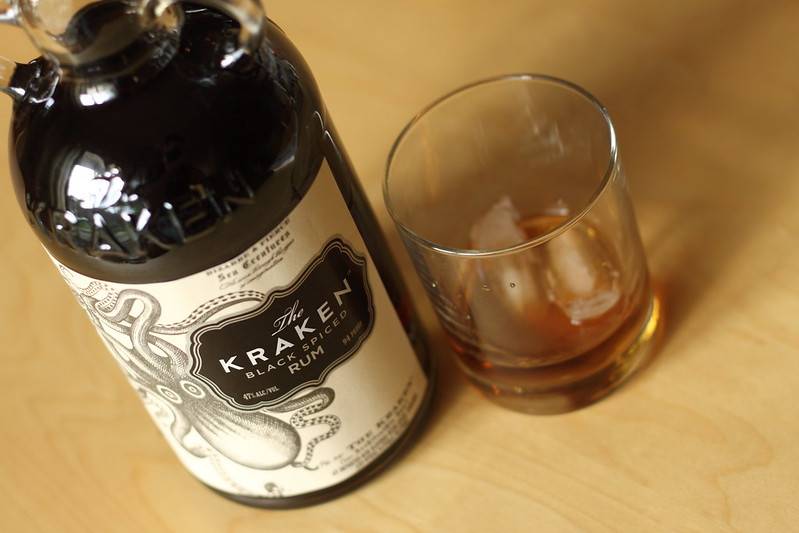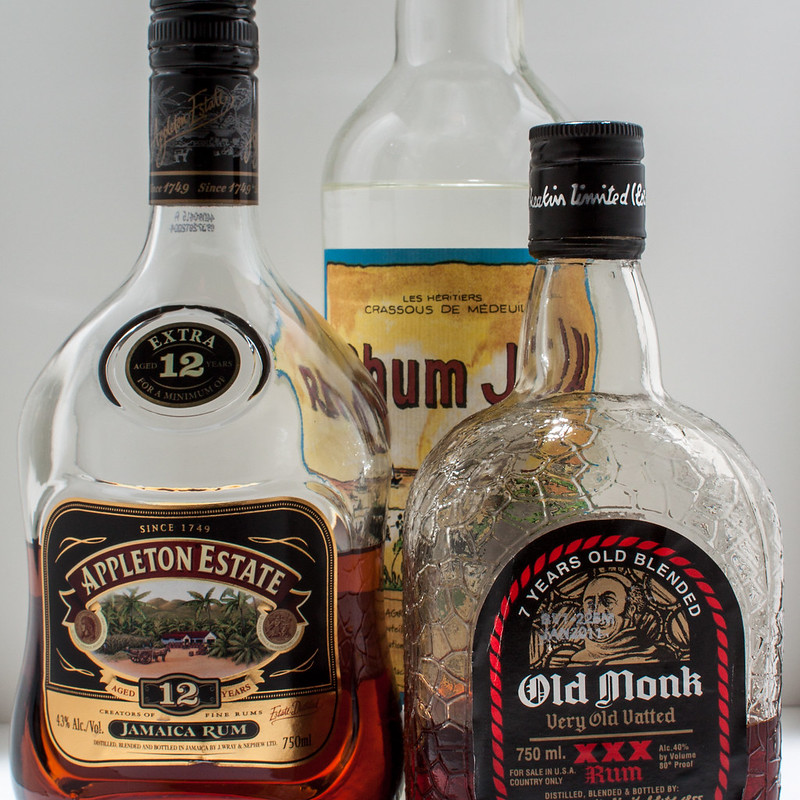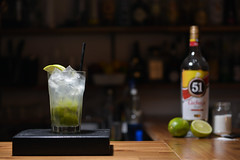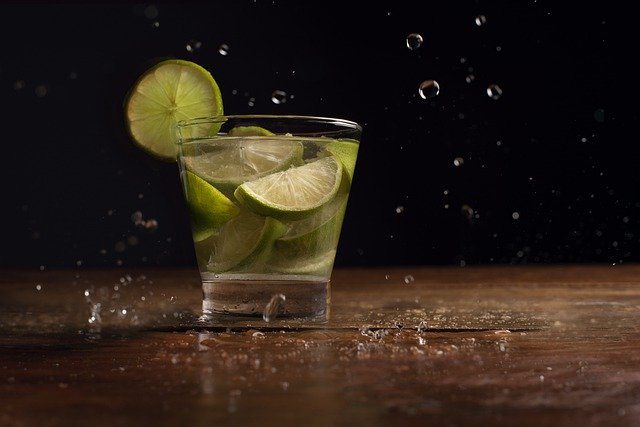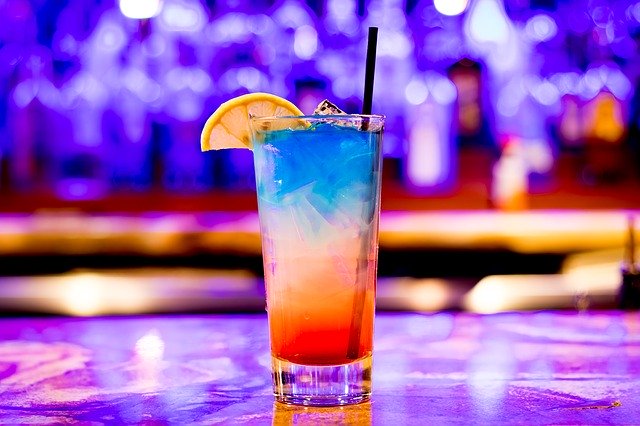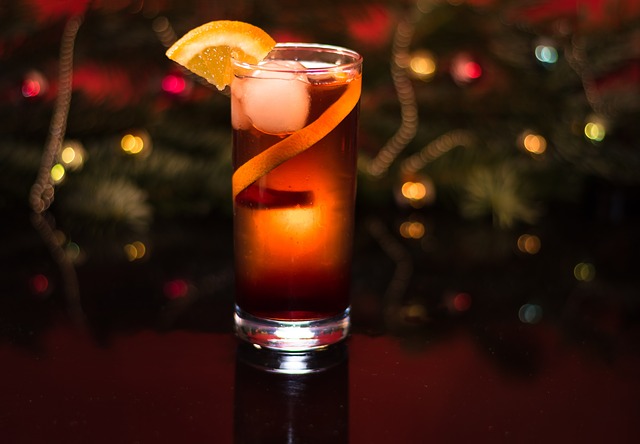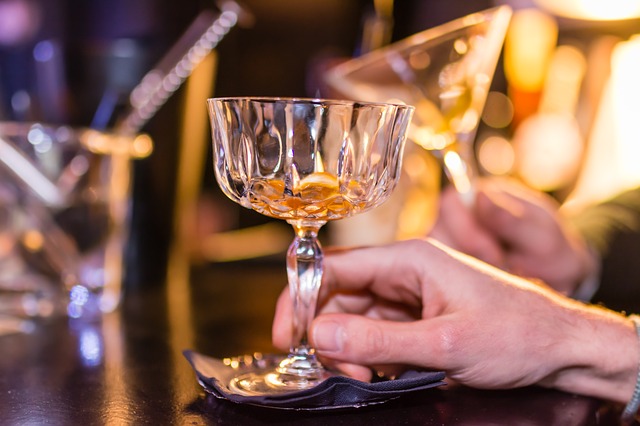Rhum Agricole
Yes, It’s Rhum O’clock!
Rhum Agricole is basically a French term for rum made out of freshly squeezed sugarcane juice. It is a style of rum that was originally distilled in the French Caribbean Islands.
The simple difference between the two is that, while rum is almost always made from molasses, Rhum Agricole is precisely made from freshly pressed sugarcane juice.
Rhum Agricole has been primarily consumed locally for most of its existence. However, in the past few decades, it has developed a cult following among the booze hounds and has begun gaining steam at parties and cocktail bars. Moreover, numerous other distilleries using fresh sugarcane have cropped up throughout the Caribbean Islands and all around the world.
The Taste of Rhum Agricole
Rhum Agricole is considered rawer and more authentic in comparison to other variations of the drink. And then there are many people who say that it is also denser in flavor than other variants. Rhum Agricole essentially has a vegetal taste. It is mixed with a bit of fruitiness and is fair enough to describe the drink as bittersweet.
Rhum Agricole is a fantastic place to start for beginners. And thanks to its production method, Rhum eventually stood out from the French West Indies. Coming from the distillation of pressed and fermented sugar cane juice, Rhum emerged in the French Caribbean during the 1800s. It proved as a way to keep sugar factories in control after the French turned towards sugarcane as its source for the sweet tooth.
Martinique as such is perhaps best associated with Rhum Agricole. It even has its own appellation for the drink, though it can be made anywhere in the world. More and more companies nowadays all across the globe are indulging in the production of Rhum Agricole. International producers are presently experimenting with aged and unaged examples of this spirit. Many also believe that they can offer a great expression of unique flavor and aroma to consumers.
Experts have identified several tasting notes like ‘baked bananas’, ‘soft banoffee pie’, and vibrant ripe banana’ in the glass to allure toasters. Other flavor descriptors of Rhum often include ‘funky’, ‘grassy’, and ‘vegetal’ as a prelude.
Here is a short list of ten of the best Rhum Agricole bottlings tasted by experts from Martinique’s Trois Rivières to the most innovative Holyrood Distillery in Edinburgh.
Rhum Agricole Brands
Right from the French West Indies to Spain, the United Kingdom, and Australia, here are the ten best Rhum Agricole brands for you to savor .
- 12 YO Selección Familiar Rum: Produced by Destilerias Arehucas in Spain, this bottle contains a delicate aroma with brown sugar, cooked orange, hints of spice, and vanilla with a subtle floral aromatic impression on the nose. This Rhum with 40 percent ABV leads to a big rich well-rounded palate, with bitter orange tropical fruit flavors that effectively combine with the influence of oak.
- 7 YO Rhum Vieux Agricole: Produced by Rhum J Bally in Martinique, this bottle contains pronounced aroma characteristics showcasing a wonderful expression of cane sugar, minerality, spice, sweet vanilla, and oak influences on the nose. It affectionately combines cooked sugar, fresh green notes, leather, and spice flavor on the palate. This Rhum with 45 percent ABV ends on a long lingering finish as well.
- 18 YO Selección Familiar Rum: Produced by Destilerias Arehucas in Spain, this bottle contains highly pronounced aromas of cake, cane juice, oak, rosehip, vanilla, and white sugar notes on the nose. It comes along with burnt caramel and hints of green and rum sponge cake notes on the palate. This Rhum with 40 percent ABV imparts a very silky mouthfeel alongside influences of oak and spice.
- FNQ Iridium 5 YO Rum: Produced by Mt. Uncle Distillery in Australia, this bottle contains incredibly appealing aromas of apricot, oak, and sweet stone fruit, on the nose. It comes along with a loving development of oak and fruit on the palate. This Rhum containing 40 percent ABV is refreshingly light, complex, and well-balanced. A beautiful experience with a long and expressive finish.
- Belcrum: Produced by Spirited Union Distillery in the Dominican Republic, this bottle contains vibrant and ripe banana flavors. They effectively combine with subtle vegetal aromas on the nose. This Rhum with 40 percent ABV delightfully flows onto the hugely well-balanced palate. The taste is billowing along with a richness from sugared almonds, ripe caramelized banana, and soft green undertones. The overall experience is delightfully long and sweet.
- Camikara 12 YO Rum: Produced by Piccadily Agro Industries in India, this bottle contains an alluringly sweet spirit with soft banoffee pie and marshmallow aromas. This Rhum with 50 percent ABV is lingeringly moreish and well-balanced. It delivers a gentle richness on the journey to an exceedingly soft finish. And remember that you just cannot afford to miss this one!
- Elizabeth Yard Savanna 9 YO Spanish Oak Palo Cortado Sherry Quarter Cask Rum: Produced by Holyrood Distillery in the United Kingdom, this Rhum is beautifully soft with sweet vanilla aroma characteristics on the nose. The big flavor characteristics it presents on the palate contain clear aromatic oak aging influences. Alongside 50.3 percent ABV, this spirit creates a sweet and mature expression with a mouth-filling effect. Overall, this delicious example shows balanced tannins.
- Trois Rivières Triple Millésime 2005 2010 2015 Rhum Vieux Agricole: Produced by Gruppo Campari in Martinique, it contains a pronounced aroma of baked bananas, candied citrus peel, and lovely fruits along with hints of floral notes and grassy undertones. This Rhum with 42 percent ABV effectively combines cereal notes and wood flavors on the palate. The complex layers of aromas and flavors in the spirit are very well-balanced with a delicate, dry, and oaky finish.
- Barcelo Imperial Premium Blend 40th Anniversary Rum: Produced by Ron Barcelo in the Dominican Republic, this spirit with cacao, cherry, spice, and vanilla aromas goes well on the nose. Along with 43 percent ABV, this Rhum features a great balance of flavor and texture with lots of complex layers. Overall, it ends with a sweet caramel finish.
- Providence 2019 Rum: Produced by La Maison & Velier in Haiti, this Rhum features 52 percent ABV. It goes well on the nose along with flavors of candied peel and white pepper. Eventually, this spirit leads to a weighty and meaty palate. You can relish leaning into Parma ham along with tomato. Overall, this delicious experience reminds you of a bright and elegant cognac-like finish.
Rhum Agricole Cocktails
Mixing up Rhum Agricole cocktails was once a rarity in American bars. It can now, however, be commonly found on many cocktail menus across the country. Here are some ways to begin mixing them up with the contrastingly funky spirit.
- Broken Corazon Club: This cocktail selectively combines a float of Fernet tempers and bright tropical highball flavors. The Broken Corazon Club was created by a Portland bartender called Damaris Peterson. It was meant to capture the elation and heartbreak put together that swell with temperamental love. The drink features a little tropical funk from Rhum Agricole and maraschino liqueur. The mix is ably comforted by grenadine, lime, and pineapple. And the drier-style fernet hangs over everything like a storm cloud.
The prep combines the rhum with grenadine, lime, maraschino, and pineapple in a shaker with ice. Shake it until chilled and then strain the mix into a glass with fresh ice. Finish the drink by floating the Fernet on top and garnishing it with a lemon or orange slice.
- Daiquiri D’ananas Cocktail: Pineapple liqueur lends a pure tropical vibe to the Daiquiri D’ananas Cocktail. While the earthy Rhum Agricole pairs perfectly well with a sweet and juicy pineapple liqueur. This cocktail from Erik Hakkinen just got creative now on behalf of the Back Bar Project. Erik for 10 years helmed the bar at Seattle’s Zig Zag Café.
The preparation adds all the ingredients to a shaker filled with ice and is shaken well before straining it into a chilled glass and finally garnished with a lime wheel.
- Prickly Pear Cocktail: This hearts and minds cocktail involves a delicious study of flavor contrasts along with amaro, prickly pear, sparkling wine, and Rhum. The Prickly Pear Cocktail name is meant to evoke the unspoken mysteries of faraway places. And this sparkling cocktail from Seattle is a perfect application of opposing flavors. With the light tropical notes balancing and counter-playing the dry and bitter fernet, Rhum Agricole in fact was a perfect fit according to experts.
The prep involves shaking the Rhum Agricole along with lemon, purée, and syrup in a shaker with ice. It is followed by straining the mix into a chilled flute and topping it with sparkling wine. The float and the fernet on top of the wine are the icing on the cake.
- Isle of Golden Dreams Rhum Negroni: This cocktail is bright, bitter, and slightly grassy. The Isle of Golden Dreams Rhum Agricole Negroni brings an earthy island twist to this white drink from Houston.
The preparation of this cocktail is simple. Just stir the ingredients together in a mixing glass with ice and then strain into a coupe. Add the finishing touch by garnishing it with expressed lemon peel and rosemary sprig.
- Juke Cup Cocktail: Cucumber and ginger beer eagerly meet up with falernum and rhum in the Juke Cup Cocktail. Danny Shapiro seems to know a bit more about falernum. He, in fact, developed a high-ABV version of the liqueur with the help of Seattle’s BroVo Spirits. Danny here uses the spice-fueled sweetener as the base of this cocktail. And he rounds it out with a bit of fresh cucumber, honey, and lime. The Rhum Agricole in this drink adds a subtle whisper of grassy sweetness to the mix.
Add a cucumber slice along with honey syrup and lime juice to the glass before muddling. Subsequently, add falernum and Rhum Agricole alongside ice cubes. Top it up with ginger beer and garnish the drink with a cucumber slice or a pineapple wedge.
- A Matcha Colada: This is the way of the warrior if you like Piña Coladas. Try a Matcha Colada twist from Pouring Ribbons. It is an ode to the classic Piña Colada. This Rhum Agricole cocktail welcomes earthy matcha tea and soothing vanilla flavors to the mix.
The Matcha Colada preparation involves shaking all the ingredients with ice until chilled. Then strain the mix into a Pilsner glass with crushed ice before garnishing it with a mint sprig, matcha pocky, or a paper crane.
- Pennington Daiquiri: This is an earthy take on the classic at Lost Hours from the now-closed Koreatown bar. The cocktail menu here was structured around the four elements of nature. Air, Earth, Fire, and Water equally contribute to the making of this Rhum Agricole cocktail. From the Earth section, The Pennington Daiquiri from the earth section zeros in on green flavors. While the grassiness of Rhum balances the herbaceous flavor of Suze. The mix helps in creating a complex but easy-going Daiquiri-inspired cocktail.
The preparation simply involves combining all the ingredients in a shaker with ice. And to be shaken until chilled. Following this you can double-strain the mix into a chilled coupe before garnishing it with a lime wedge.
- Three Dots and a Dash: This tiki favorite adaptation of Smuggler’s Cove stays true to the flavors of Don Beachcomber’s classic recipe. It was created during WW II by the godfather of the genre, Donn Beach. Three Dots and a Dash means ‘Victory’ in the Morse code. Modern tiki mecca Smuggler’s Cove in San Francisco adapted this version from the Beachbum Berry’s Sippin’ Safari.
Add all the ingredients to a blender tin in the preparatory phase. Then fill the mix with 12 ounces of crushed ice. Flash blend and pour the content into a footed pilsner glass in the last step. Garnish the drink with 3 maraschino cherries on a cocktail pick and a pineapple wedge.
- Ti Punch: It is the national drink of Martinique. Ti Punch is made with a simple trio of ingredients. It includes a splash of sugar syrup, a quick squeeze of lime juice, and a dram of grassy rhum agricole. No wonder this Rhum Agricole cocktail is the national drink of Martinique.
The preparation is a bit savvy. It involves using a knife to cut a small chunk from the side of a fresh lime. This should be about a quarter in diameter and thick enough to have a slice of the pulp. Then add cane syrup and squeeze the lime piece into the glass while adding the slice. Add the rum; Stir well with a bar spoon before adding Rhum. While ice is optional, you can adjust all ingredients according to taste.
- White Elephant from Bar Chef: This is a super-smooth combo of cilantro, coconut, Rhum Agricole, and Thai chile. Christiaan Röllich in his book Bar Chef named this cocktail after the sacred white elephants in Thailand. Albino elephants as such are very rare and were generally kept by royalty. The old-school depictions of Southeast Asian artwork often include white elephants dressed up with jewels and other decorations. The name White Elephant seems perfect as this cocktail is white and has Thai influences as well.
The prep involves combining the ingredients in a shaker filled with ice. Make it a point to shake vigorously before pouring the cocktail, including ice, into a Collins glass. And don’t forget to garnish it with a lime wheel. Make sure to stretch the wheel out so it becomes a spiral. And remember to lay it on top of the cocktail.
Rhum Agricole Vs Cachaça
After having cleared up the confusion and explored rums beyond what you find on the local marketplace, it is time to compare Rhum with Cachaça.
Rhum Agricole from the French Caribbean and Cachaça from Brazil are both made from cane juice. And they taste pretty similar as well in their unaged ‘silver’ adaptations.
However, the answer is far more complicated than it looks like. So, let us dig a little deeper into how these canes transform.
The Origins
It is a fact that Brazilian Cachaça predates Rhum Agricole by at least 200 years. Production of cachaça got underway in the early 1600s. And the French islands made headway into cane juice-based Rhums only in the 1800s.
Rhum Agricole from Martinique today is considered among the finest in the world. The Martinique AOC (Appellation d’Origine Contrôlée) precisely dictates rules concerning how rhum labeled as Martinique Rhum Agricole must be made. These rules are frequently cited as a counter-example for people who say that rum has no rules to govern production. And Brazil, on the flipside has very few guidelines that must be followed to label the spirit as cachaça.
However, both the Martinique AOC and Brazil’s cachaça regulations state that the spirits must be made within their respective locales. It does not offer much on how they beg to differ. Nevertheless, other specifications laid out on production styles help highlight why they are so different.
The Distillation Process
The Martinique AOC dictates that rhum made here should be distilled in column stills. Cachaça, in contrast, can be distilled in either column or pot stills. Nonetheless, mass-market industrial cachaça is usually made in column stills. But the traditional, artisanal cachaça is typically made in a pot still.
The choice of pot vs. column distillation makes a huge difference in the flavor of the spirit. The pot distillation process is generally heavier and more flavorful. While column distillate is lighter and cleaner. The two spirits exhibit wide taste variations, although they are both cane juice-derived spirits.
Another key difference between Rhum Agricole and Cachaça is how intensely they have been distilled. Rhum Agricole is column distilled and must maintain an ABV between 65 and 75 percent. Moreover, Guadeloupe Island is not subject to the AOC regulations and so some distillers here go as high as 85 percent ABV. They believe that the higher proof you distil, the more flavor compounds are removed.
Cachaça in contrast can only be distilled once and must be distilled to final proof in the absence of a second distillation process. Moreover, artisanal cachaça is typically pot-distilled slowly to enhance the separation of desirable and undesirable components. The final ABV must also be maintained between 38 to 54 percent.
The Aging Process
Unaged Rhum Agricole and Cachaça may taste quite similar to the beginner. However, the aged counterparts really illustrate stark differences. Rhum Agricole is usually aged in French or American oak. Oak makes a huge difference in the outcome of aged spirits.
Brazilian forests, on the other side, are a wonderland of exotic hardwoods. And quite a few of them are rarely found outside that country. Cachaça makers never shy away from using these unusual woods. They impart extremely intense and unique flavor notes that you are unlikely to ever experience elsewhere.
For instance, tasting an Amburana wood-aged cachaça makes it perfectly clear. It makes sure that you are a long way from the smoothened vanilla flavors of oak. It brings intense cinnamon and spice notes to the spirit which makes it extremely mixable in cocktails. Other hardwoods commonly used in the process of aging cachaça include bálsamo and jequitibá. And slowly but surely, these hardwood-specific varieties in spirit making are coming outside of Brazil.
Last, but not the least, there is the duration of aging. And most hardwood casks are not charred or toasted. They quickly impart a lot of flavors. This is why it is rare to find a cachaça aged for more than three or four years. Some Rhum Agricoles on the other hand are aged for upwards of 10 to 15 years.
Rhum Agricole is like classical music. They are well matured, refined, and rarely go outside of proven norms. Cachaça in contrast is like a rock band. It is young, brash, and comes in many forms. You can expect to try those unique flavor profiles induced by different types of wood aging.
Getting Over the Canefusion
Nevertheless, both Rhum Agricole and Cachaça are immense categories. They have many layers to explore. It would be a great mistake to own a bottle or two of them and think that you have covered the entire category. You would be well served to try as many aged and unaged varieties as you can. See what suits you best, and go deeper to explore more.
